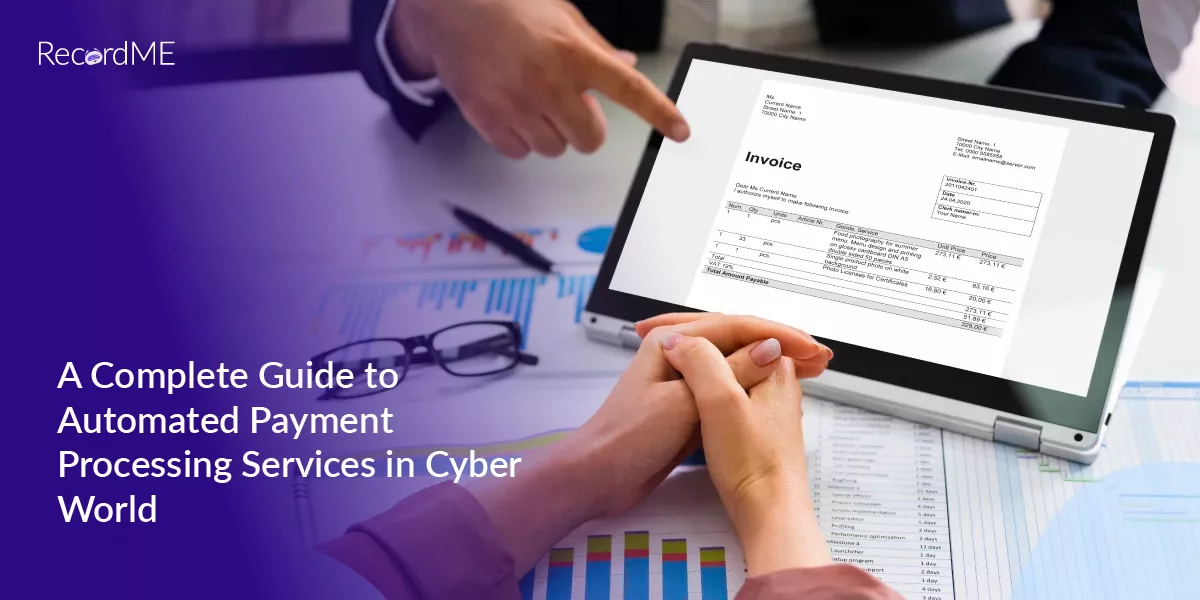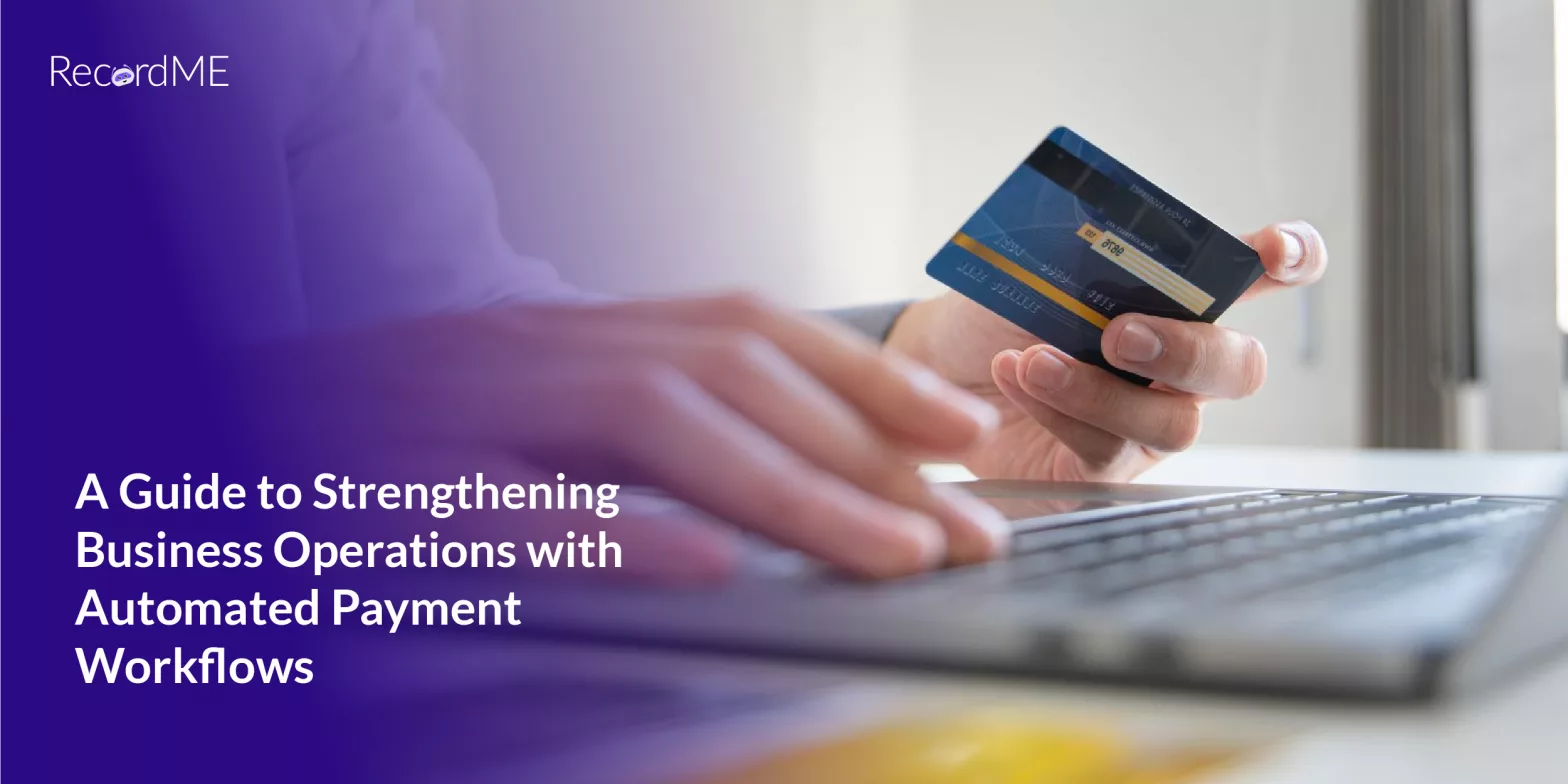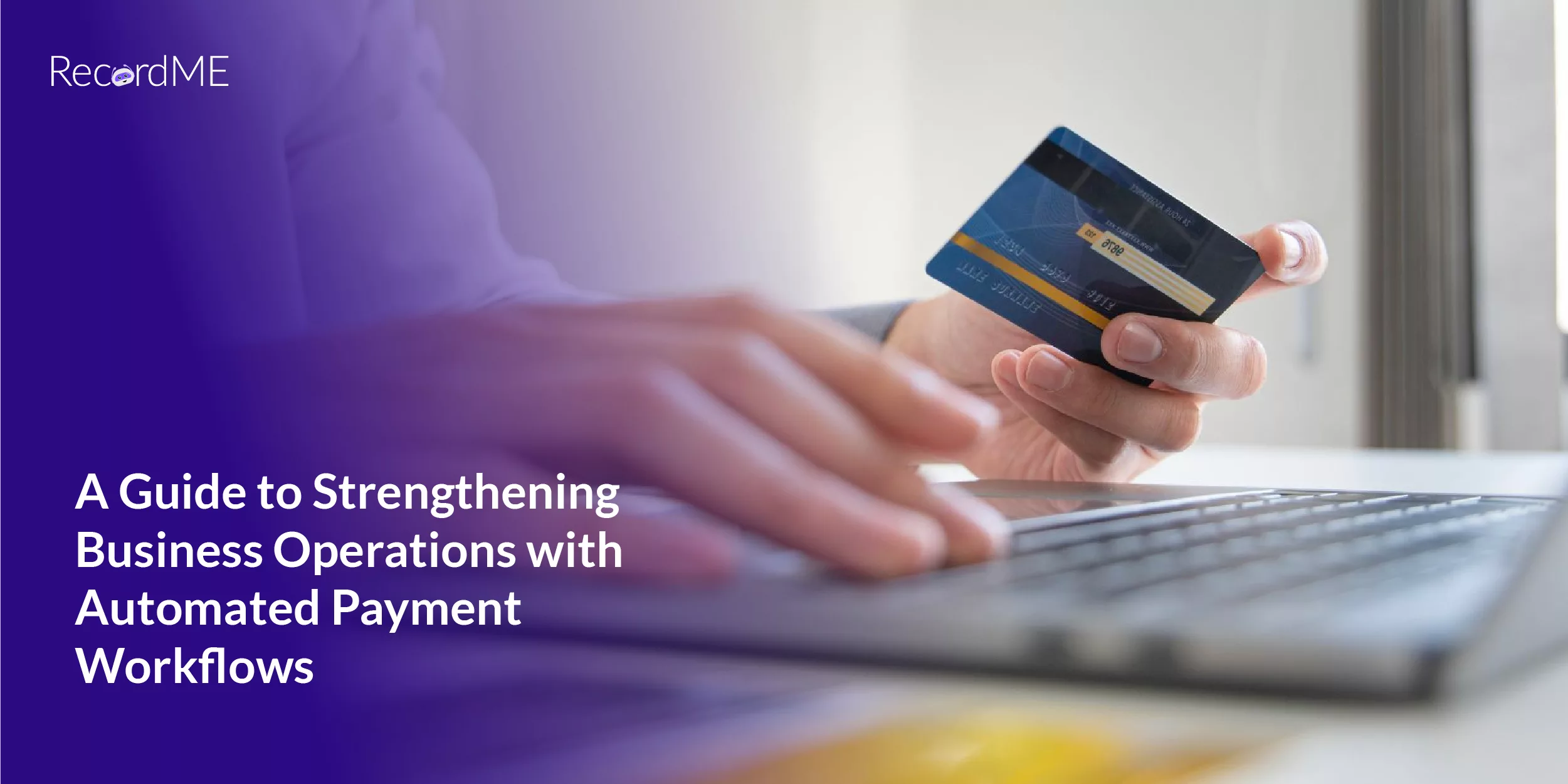Automated Payment Processing – Streamlines AP Operations in Financial Businesses

In This Post
Every successful enterprise passes through a series of developmental phases. These times are essential because they frequently accompany innovations that allow for the development of ongoing operations. They are also key periods in which a firm’s actions have critical consequences for the future.
All expanding businesses experience obstacles to growth, but success ultimately depends on how they deal with those difficulties. Accounts payable teams, in particular, have been known to struggle and fall behind as businesses expand. The increasing number of transactions and invoices that use manual processes is usually the reason for this lag. Moreover, up to 30% of SMBs anticipate that their late payments will have a detrimental effect on their suppliers, employees, and investments.
There comes a time in every successful organisation when manual processes no longer provide the necessary support. This blog will explain how organisations can streamline their accounts payable operations using advanced automated payment processing services.
Processes to Consider When Scaling Your Business
It takes much responsibility to be in charge of the company’s finances. There may be a constant demand for businesses to seek strategies to enhance their procedures. Companies may consider payment processing software when their businesses expand seriously and the responsibilities of the accounting departments increase in complexity. Prioritising their efforts is essential to the success of any automation endeavour.
When assessing potential AP and secure payment processing solutions, what are the most critical processes to focus on?
-
Points of Communication
Effective AP process relies heavily on open lines of communication. Large-scale operations often necessitate extensive vendor communication. The suppliers then send information back to the firm. There is a risk of delays at these interfaces if the procedure is still partially or wholly manual.
From submitting a purchase order to confirming that transaction and beyond, this information can be automatically transmitted due to sophisticated tools. This data automatically enters the company’s systems, where many departments can access it.
-
Invoice Payment Processing
The accounts payable department works promptly to verify and authorise invoices. Any company would benefit from a quicker completion of this procedure. Finance departments struggle to balance competing demands well, and invoice payment processing is often a significant barrier at scale.
Large companies must process thousands of invoices weekly instead of just a few hours. This requirement opens up an extensive number of possibilities for insight and reflection. Automating this process as much as feasible will give several perks.
-
Automatic Approvals
In a typical company, how many people must review an invoice before it is approved for payment? The majority of businesses would say “too many.” Today, manually transferring documents for authorisation is too slow, but strict payment approval standards can prevent wasted spending and fraud.
Approval can be given instantly when invoices are processed automatically and comply with the predefined criteria. If assistance from a human is required, the system, rather than a worker, will immediately forward the request. It’s a vital consideration for efficient scalability.
-
Purpose-Built AI
AI may become the single most helpful component of tomorrow’s workplace. Businesses can tailor AI/ML technology deployments that facilitate automated payment processing to align with their governance requirements. Meanwhile, AI can perform calculations at a rate many orders of magnitude higher than a human knowledge worker.
At first appearance, only some of these activities seem connected, highlighting a negative element of conventional accounts payable. Companies can streamline these operations by switching to a new solution that centralises them in the cloud. A single accounting automation software package makes teamwork in a simplified setting possible. It can also aid companies in resolving some typical AP issues.
What are the Common Challenges in the Account Payable Process?
When selecting automation solutions, it is crucial to pinpoint the areas where effective scalability is imperative. Examine the issues companies face now that automated payment processing solutions could help with or possibly solve.
Organisations devising a strategy to expand their department’s activities should focus on two crucial aspects. One aspect is the practical drawbacks of manual payment processing and the actual financial effects of antiquated accounting practices.
-
Manual Process Constraints
The productivity barrier for manual payment processing is high in traditional methods. However, manual payment processing comes with many challenges, such as:
- The accounting data is too high for efficient processing.
- Decreased output because of employee absences, such as those occurring on holidays.
- Typographical errors, incorrectly matched data, and mental tiredness leading to skipped procedures are all human mistakes.
-
Late Penalties
These limitations have consequences beyond slowing down the payment process, which can slow procurement. Invoices are easily forgotten or misplaced when processed manually. Late supplier penalties can cost the company money and throw off its budget if payment deadlines are missed.
To simplify making payments on time and avoid late fees, firms should implement intelligent AI accounting solutions like AP Essentials.

Essential Tips For Easy Payment Processing Automation
The most popular payment processing system helps businesses save time and effort by automating routine invoicing procedures. Automating finance and accounting services is hard, but the benefits far surpass the costs involved. If a company processes payments manually, it may be time to switch.
Listed below are resources that can aid organisations in automating their payment processing.
-
Implement a Payment Processing Strategy
The biggest challenge when evaluating accounting software for small businesses may not be cost, which has dropped, or quick installation. Companies must convince their teams that accounting software will improve their work lives, not upset them. Collecting statistics on payment processing time, impact on the business’s bottom line, and accounting software management is crucial.
-
Implement Payment Processing Across All Channels
Another important distinction is between a payment gateway and an invoice processor. A payment processor is a service that communicates cardholder data to financial institutions such as issuers and acquirers. On the other hand, a payment gateway relays the data to the processor.
If a company only accepts one payment type, it might be time to take others. Businesses can now make safe, dependable, and time-efficient account-to-account payments. Customers get the ease and simplicity of use they want while paying using various methods.
-
Find the Right Payment Processing Solution
The first step in automating invoices is to acquire suitable billing and payment processing software. Determine the most troublesome billing issues by analysing the company’s internal operations and metrics. Learning about the various options for automated payment processing is essential so businesses can select the best software for their needs.
Fortune Business Insights, the payment processing solutions industry will grow 11.7% to $116.17 billion by 2027. Developers provide advanced payment services internationally since large Fintech firms are accepting value-added solutions and credit and debit card payments are rising.
An excellent automated payment processing system should include these key features:
- By releasing companies from the burden of pursuing every possible payment method, multichannel payments increase income and sales.
- The ability to white-label a developer-friendly API to maintain brand consistency across all touchpoints is key to a seamless integration.
- Reconciliation is simplified by the high level of detail in the reports generated.
- The onboarding process should be straightforward and safe for the customer.
-
Set up Electronic Invoices
New data shows that organisations with few or no human AP procedures cost $2 or less per invoice, whereas those with little or no automation spend more than $10. This is why handling invoices value matters.
The organisation spends too much time preparing, delivering, and monitoring paper invoices, which distracts them from other important responsibilities. This time can be recovered with automated payment processing.
Manual invoicing affects organisations’ bottom lines because human error reduces revenue. Automated billing systems ensure precise payment by eliminating manual data entry. Automation speeds up invoice delivery, reducing the statement-to-cash cycle.
-
Schedule Payment Reminders
The invoicing process can be streamlined through the use of an effective payment processing reminder procedure. Invoices should specify when payment is due. However, clients may pay late. Businesses ought to put out payment reminders quickly to avoid this situation.
Invoice collection by email reminder is great, but accounts receivable staff must manually maintain reminder calendars and send client follow-ups. Instead, these tasks may be managed by an automated payment processing system, which would then send out reminders to customers at the appropriate times.
-
Create a Secure Online Payment System for Users
Businesses might focus on automating transactions using a self-service portal after streamlining the billing process. Through online payment gateways, customers may quickly pay bills, check balances, change memberships, and update their data. On-time payment rates are higher when customers have a more direct experience. The personnel at the firm will spend less time managing inquiries, processing payments, and authenticating as more clients use the self-service payment gateway.
-
Create Billing Performance Dashboards for Data Analysis
When an organisation uses manual invoicing, it can be challenging to create and keep correct, up-to-date data. A team could spend hours or even days on reporting. Businesses may get the real-time information they need to settle customer accounts due to automated payment processing solutions. However, it handles the tedious details of the reporting process on their behalf.
It is important to consider reporting needs while designing a payment processing solution. Thus, a high-quality dashboard is necessary for easy monitoring of key metrics and customer information.
Automate Your Payment Processing With RecordMe
Are you exhausted from managing payments by hand every day? RecordMe, an automated accounting platform, offers businesses and individuals a comprehensive solution by doing away with manual processes that are prone to errors and inefficient. An automated payment processing system offers a business advantage for precise and efficient financial administration.
Are you still not known of how automation could benefit your success in the contemporary digital environment? Get in touch with us!
Frequently Asked Questions (FAQs)
Q1) What is Payment Processing?
Ans) The process of handling vendor or supplier invoices from receipt to payment and recording them in the general ledger is known as payment processing. Moreover, it is handled by the accounts payable department.
Q2) What are the Benefits of Automated Payment Processing Services?
Ans) The following are the benefits of an automated payment processing system:
- Faster payment processing cycle time
- Cheaper transactions
- Fraud prevention
- Reduced errors and duplicate payments
- Increased supplier satisfaction




